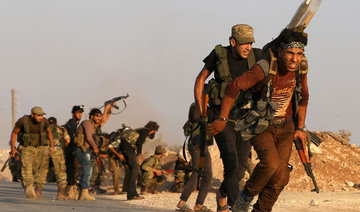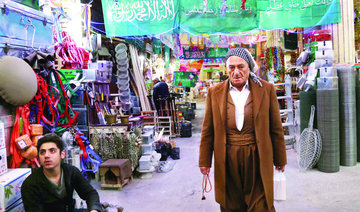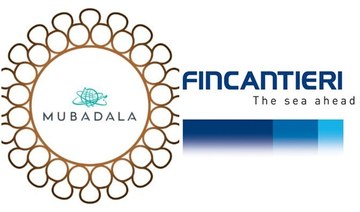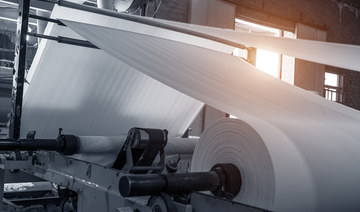MAARAT Al-NAASAN: In a opposition-held town in Syria’s northwest, streams of crude oil are piped into a cylindrical tank to be primitively refined, capping a weeks-long odyssey from fields further east.
Over the past two years, nearly 100 makeshift refineries have cropped up around olive groves in Maarat Al-Naasan, now a hub for processing precious “black gold” in Idlib province.
Bringing consumer products into the extremist-controlled province is notoriously difficult, as it has been almost entirely cut off from government areas since Syria’s war erupted six years ago.
And smuggling goods across the closed border from rebel-backer Turkey is very expensive.
To keep cars, bakeries and heating units running in the province, Idlib residents-turned-oilmen are trucking in crude from Syria’s northeast to refine it and distribute it to the population.
“We can’t bring fuel from regime areas or from another country, so we’re forced to refine it here,” says Jamil Al-Nimr, the bearded 34-year-old owner of one refinery.
The primitive process yields “gasoline, kerosene, and diesel, which is then distributed to the local markets,” says Nimr.
But it first begins hundreds of miles to the east in Syria’s Hasakah, a mostly Kurdish-controlled province dotted with oil and gas fields — an arduous and expensive journey.
Barrels of crude are purchased from the Hasakah fields for $47 each and an army of truck drivers then begins the weeks-long trip back west.
“The journey takes between 20 days to a month,” says Abu Al-Omarein, a 41-year-old truck driver.
Along the 400-kilometer (248 miles) route that cuts through Syria’s fractious war-ravaged north, they pass through numerous checkpoints manned by Kurdish and rebel factions.
At each checkpoint they must pay a toll and by the time they reach Maarat Al-Naasan, they will have paid the equivalent of $17 per barrel in fees.
Abu Al-Omarein said he and fellow truck drivers used to bring crude from fields controlled by Daesh group in Syria’s oil-rich eastern Deir Ezzor province, but not anymore.
The extremists now hold just a sliver of the province after losing out to twin offensives by Russian-backed regime forces and US-supported fighters.
On a recent day Abu Al-Omarein sat on the ground at the entrance to Maarat Al-Naasan, sipping a warm cup of tea and chatting with fellow drivers as the crude oil barrels were unloaded from the trucks.
The crude is funnelled into a large metal cylinder where it is heated and separated into gasoline, kerosene and diesel.
The liquids then pass along metal pipes through a basin of water, which cools them down so they can be collected in plastic containers for sale.
The processing costs $24, leaving consumers paying an average of $95 per barrel.
Malek Hajj Hamdan says he relies on these primitively refined oil products to run his bakery because they are more affordable than those provided, irregularly, by the Syrian government.
The oil refined in Maarat Al-Naasan is 30 percent cheaper than what arrives from regime areas, he says, adding that this ultimately means that he can sell his bread at a lower cost.
But this oil also contains many “impurities” that damage his baking equipment, says Hamdan.
The rudimentary refining process has also taken a toll on the health of residents, according to Fahed Al-Abd, a specialist in internal and cardiac medicine at Maarat Al-Naasan’s medical center.
Around 2,000 patients a year, mostly children under 15, suffer from complications from “the organic materials spread in the air as a result of the refineries and the primitive processing of crude petroleum products,” says Abd.
Six-year-old Abdel Nasser was one of those affected in Maarat Al-Naasan.
Around a year ago, dark spots began appearing in a thick diagonal line across his cheeks, his father Abu Yahya says.
“There were a lot of refineries around town putting out a ton of smoke and gases and causing uncontrollable damage,” he says. “The biggest proof of this is my son.”
“Thank goodness, we are treating him now, but the doctor told me that the marks will be there for the rest of his life.”
The medical center blames “gases and unclean air” emanating from the refineries for Abdel Nasser’s condition.
To scale back the environmental damage and adverse health effects, rebel authorities have set up strict schedules during which refineries can operate.
“In the past, the 100 refineries in Maarat Al-Nasaan used to operate every day, all at the same time,” says refinery owner Riad Haydar, 37.
“But today, they take turns... so around 20 or 25 operate each day.”
In opposition Syria, makeshift refineries process precious crude
In opposition Syria, makeshift refineries process precious crude
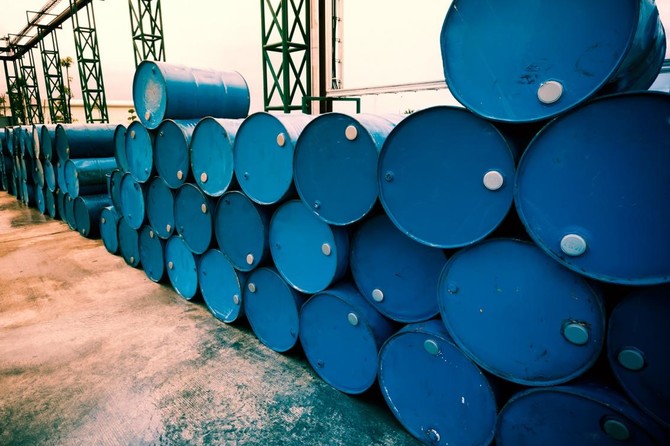
Italy’s Fincantieri launches Saudi shipbuilding unit to strengthen collaboration
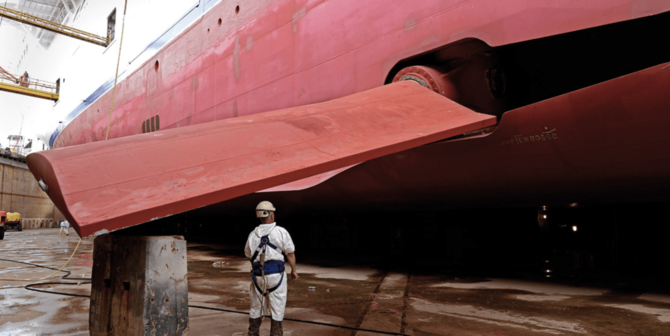
RIYADH: Italian shipbuilder Fincantieri plans to enhance collaboration with Saudi Arabia through a newly established unit the company said.
Fincantieri Arabia will bolster the Kingdom’s Vision 2030 development agenda in the cruise, defense, and offshore sectors, the group disclosed in a press release, issued on the sidelines of an industrial conference in Riyadh.
Fincantieri is the only shipbuilding group active in all high-tech marine industry sectors, the release added.
The new unit aims to highlight the group’s wide-ranging capabilities in shipbuilding, maritime equipment and systems, and naval logistic support services, including training and simulation.
It will also manage stakeholder relationships in the Kingdom and seek out local partners.
Moreover, Fincantieri said it plans to share its technological expertise in shipbuilding across cruise, defense, and offshore sectors, thus opening up opportunities for Saudi nationals.
The firm’s CEO Pierroberto Folgiero: “Our commitment to the Kingdom of Saudi Arabia is steadfast. Fincantieri stands out in the shipbuilding industry for its vertically integrated model and our leadership across naval, cruise, and oil and gas sectors. We are proud to offer these world-class capabilities built on decades of naval heritage and excellence to help the Kingdom achieve its Vision 2030 objectives.”
He added: “Given the maritime industry’s pivotal role under Vision 2030, we eagerly anticipate establishing strategic partnerships. Through these collaborations, we aim to enhance local technological capabilities, create opportunities for Saudi talent, and foster knowledge exchange.”
The state-controlled Fincantieri has expanded its presence in the Middle East in recent years. In March 2023, Folgiero stated that the group would venture into the Saudi market and was strategically positioned for growth in the region.
The Italian group is also aiming to enhance its focus on defense, a sector that presently contributes to around a quarter of its revenues.
On May 20, Fincantieri concluded a shipbuilding joint venture, named Maestral, with Abu Dhabi-based EDGE Group. The two entities announced the signing of a €400 million ($433 million) contract with the UAE’s Coast Guard Forces for the supply of 10 advanced 51-meter offshore patrol vessels.
Lebanon’s reforms insufficient for recovery, IMF says
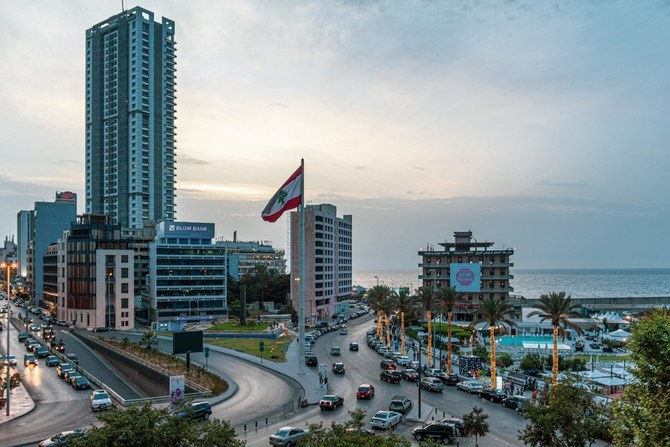
Lebanon’s economic reforms are insufficient to help lift the country out of its economic crisis, the International Monetary Fund said on Thursday.
Ernesto Ramirez Rigo, the head of the IMF mission visiting Lebanon, said in a statement that Lebanon’s ongoing refugee crisis, fighting with Israel at its Southern border and the spillover from the war in Gaza are exacerbating an already dire economic situation.
Israeli forces and Lebanon’s Hezbollah have traded fire across Lebanon’s southern border since the war in Gaza broke out in October last year.
Israel launched its assault on Gaza following a Hamas-led attack on southern Israeli communities on Oct. 7 in which fighters killed 1,200 people and captured more than 250 hostages.
Since then, Israel’s assault has killed more than 35,000 people, with thousands more feared buried under the rubble, according to Gaza health authorities.
The conflict “has internally displaced a significant number of people and caused damage to infrastructure, agriculture, and trade in southern Lebanon. Together with a decline in tourism, the high risks associated with the conflict create significant uncertainty to the economic outlook,” Rigo said.
Fiscal and monetary reforms carried out by Lebanon’s finance ministry and the central bank, including steps to unify multiple exchange rates for the Lebanese pound and contain a currency slump, have helped reduce inflationary pressure, according to Rigo.
However, he said more needs to be done if Lebanon is to alleviate its financial crisis.
“These policy measures fall short of what is needed to enable a recovery from the crisis. Bank deposits remain frozen, and the banking sector is unable to provide credit to the economy, as the government and parliament have been unable to find a solution to the banking crisis,” he added.
“Addressing the banks’ losses while protecting depositors to the maximum extent possible and limiting recourse to scarce public resources in a credible and financially viable manner is indispensable to lay the foundation for economic recovery.”
Since Lebanon’s economy began to unravel in 2019, its currency has lost around 95 percent of its value, banks have locked most depositors out of their savings and more than 80 percent of the population has sunk below the poverty line.
The crisis erupted after decades of profligate spending and corruption among the ruling elite, some of whom led banks that lent heavily to the state.
The government estimates losses in the financial system total more than $70 billion, the majority of which were accrued at the central bank.
Oil Updates – prices fall for fourth straight day as US rate hike prospects emerge
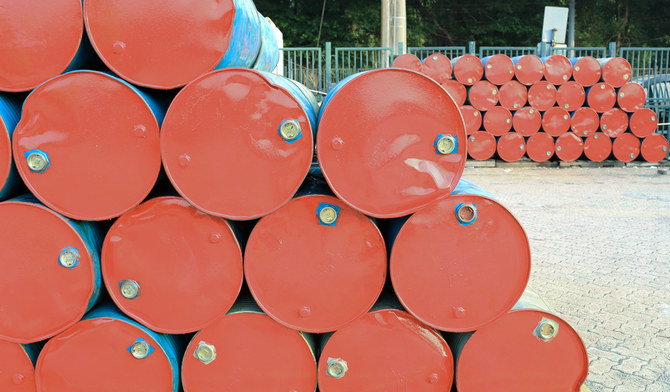
LONDON: Oil prices eased for a fourth straight session on Thursday after the minutes of a US Federal Reserve meeting revealed discussions of a further tightening of interest rates if inflation remained sticky, a move that could hurt oil demand, according to Reuters.
Brent crude futures fell 20 cents, or 0.2 percent, to $81.70 a barrel at 9:51 a.m. Saudi time. US West Texas Intermediate crude futures were down 29 cents, or 0.4 percent, at $77.28. Both benchmarks fell more than 1 percent on Wednesday.
Minutes released on Wednesday from the Federal Reserve’s last policy meeting showed the US central bank’s response to sticky inflation would “involve maintaining” its policy rate for now but also reflected discussion of possible further hikes.
“Various participants mentioned a willingness to tighten policy further should risks to inflation materialize in a way that such an action became appropriate,” minutes of the Fed’s meeting said.
Higher interest rates boost borrowing costs, crunching funds that could boost economic growth and oil demand in the world’s largest oil consuming nation.
Also weighing on the market, US crude stocks rose by 1.8 million barrels last week, according to the Energy Information Administration, compared with an estimate for a 2.5 million-barrel draw.
Globally, physical crude markets have more recently been pressured by soft refinery demand and ample supply.
“Recent market softness has come on the back of weaker data, including rising oil inventories, tepid demand, and refinery margin weakness and the increasing risk of run cuts,” Citi analysts said in a note on Thursday.
Russia said it exceeded its OPEC+ production quota in April for “technical reasons” and will soon present to the Organization of the Petroleum Exporting Countries Secretariat its plan to compensate for the error, the Russian Energy Ministry said late on Wednesday.
Citi said it still expects that OPEC+, which groups together OPEC and allies led by Russia, will hold its production cuts through the third quarter of this year when it meets on June 1.
Citi also said it continues to see Brent averaging $86 a barrel in the second quarter of 2024.
Saudi EXIM Bank signs 2 agreements with Japan’s SMBC and MUFG banks

TOKYO: On the sidelines of the Saudi-Japan Vision 2030 Business Forum in Tokyo, Saudi EXIM Bank signed two cooperation agreements with SMBC Business Banking and MUFG Bank.
The agreements aimed to foster cooperation and create co-financing opportunities to promote non-oil exports in target markets, according to the Saudi EXIM Bank.
The two agreements were signed separately by Saad bin Abdulaziz Al-Khalab, CEO of Saudi EXIM Bank, along with Akihiro Fukudom, CEO of SMBC Bank and Hironori Kamezawa, CEO of MUFG Bank, a statement confirmed.
Commenting on the partnerships, Al-Khalab stated: “This collaboration with Japanese entities is part of our joint efforts to strengthen economic relations between both countries and achieve the Saudi-Japan Vision 2030. The acceleration of commercial projects between our nations toward broader horizons comes as a result of the strength, advanced economic status, and promising investment opportunities.”
During the roundtable meeting, which brought together several ministers from both sides, Al-Khalab reviewed Saudi EXIM Bank’s activities with Japanese financial institutions and commercial companies to enhance economic and trade relations and identify projects of mutual interest.
During the financial sector’s roundtable meeting, Al-Khalab emphasized the critical importance of collaborative efforts between all financial institutions and business sectors. This is to ensure the provision of comprehensive, incentivizing credit solutions that can accelerate the pace of trade and mutual and global investment activities.
The Saudi EXIM Bank aims to empower the Kingdom’s non-oil national economy in accordance with Vision 2030. The bank is focused on enabling Saudi non-oil exports to expand and penetrate global markets by bridging financing gaps and reducing export risks.
Saudi Arabia’s non-oil exports up 3.3%: GASTAT
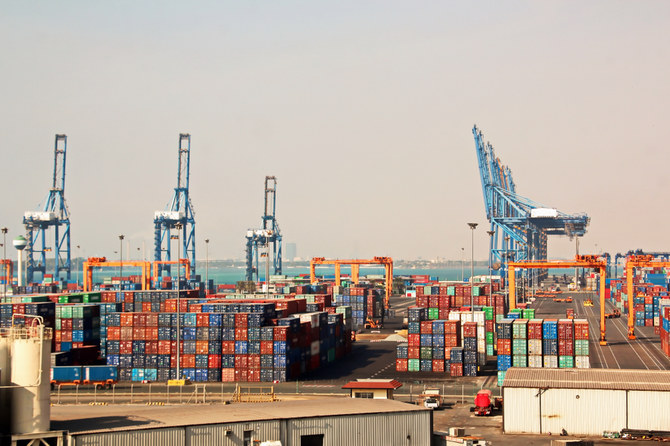
RIYADH: Saudi Arabia’s non-oil exports, including re-exports, saw an annual increase of 3.3 percent in the first quarter of this year, official data showed.
According to the latest report released by the General Authority for Statistics, the value of re-exported goods increased by 31.5 percent during the same period, while national non-oil exports, excluding re-exports, decreased by 5.2 percent.
The value of merchandise exports in March increased by 4.9 percent compared to the previous month.
However, it declined by 5.7 percent in the first three months of 2024 compared to the same period in 2023, primarily due to an 8.3 percent decrease in oil exports.
Chemical products constituted 25.1 percent of the total non-oil exports, recording an 18.3 percent decrease compared to the first quarter of 2023. Plastics, rubber, and their products followed, making up 22.8 percent of total non-oil exports, with a 0.6 percent decrease compared to the same period.
Machinery, electrical equipment, and parts, constituted 22.7 percent of total imports, falling by 5.4 percent compared to the first quarter of 2023. This was followed by transportation equipment and parts, which represented 13 percent of total imports, with a 21.7 percent decrease.
In a separate bulletin, GASTAT highlighted that non-oil exports and re-exports in March rose by 2.9 percent compared to February, and slipped by 0.8 percent compared to March 2023.
While national non-oil exports, excluding re-exports, saw an annual decrease of 6.3 percent in March, the value of re-exported goods increased by 17.6 percent during the same period.
During the first quarter of 2024, the proportion of oil exports out of total value declined from 78.2 percent to 76.1 percent. Imports, on the other hand, increased by 6.4 percent.
In the first quarter, compared to the same period in 2023, both merchandise exports and non-oil exports, including re-exports, decreased by 1.4 percent and 0.2 percent respectively. Meanwhile imports saw a 0.3 percent decline, resulting in a 3.8 percent decrease in the merchandise trade balance surplus.
In March, merchandise exports declined by 5.9 percent, largely driven by a 7.3 percent decrease in oil exports, leading to a drop in the proportion of oil exports from 78.1 percent to 76.9 percent compared to March 2023.
Conversely, imports increased by 1 percent, while the surplus of the merchandise trade balance decreased by 17.2 percent compared to March 2023.
This period also witnessed a slight decrease in the ratio of non-oil exports, including re-exports, to imports, which fell to 34.7 percent from 35.8 percent in the previous year, attributed to a significant increase in imports by 6.4 percent, compared to a 3.3 percent rise in non-oil exports.
In the first three months of this year, China was the main destination for the Kingdom’s exports, accounting for 14.9 percent of the total. South Korea and India followed with 9.8 percent and 9.5 percent, respectively. Exports to these and other top destinations made up 67.1 percent of the total.
Similarly, China was the leading source of the Kingdom’s imports at 20.9 percent, followed by the US at 8.1 percent and the UAE at 6.8 percent. Imports from these and other top sources accounted for 63.4 percent of the total.
King Abdulaziz Sea Port in Dammam was the major entry point for goods into the Kingdom, accounting for 27.4 percent of total imports.
Other key ports included Jeddah Islamic Port with 18.8 percent, King Khalid International Airport in Riyadh with 14.2 percent, King Abdulaziz International Airport in Jeddah with 8.1 percent, and King Fahad International Airport in Dammam with 6.1 percent.
Together, these five ports handled 74.6 percent of the Kingdom’s total merchandise imports.
In March, key non-oil exports include chemical products, comprising 28.1 percent of total non-oil exports, marking a 12.9 percent decrease from March 2023.
In contrast, primary imported goods include machinery, electrical equipment, and parts, constituting 24.1 percent of total imports, rising by 21.4 percent from March 2023.
China also emerged as the Kingdom’s top destination for exports where they comprised 16.4 percent of Saudi Arabia’s total exports.
Similarly, China ranked first for the Kingdom’s imports in March, constituting 21.2 percent of the total imports, followed by the US with 8.7 percent and the UAE with 6.9 percent.
King Abdulaziz Sea Port in Dammam played a vital role as one of the primary ports for goods entering the Kingdom, comprising 28.9 percent of total imports.
Other significant entry points included Jeddah Islamic Port, King Khalid International Airport in Riyadh, King Abdulaziz International Airport, and King Fahad International Airport in Dammam.
Together, these five ports accounted for 76.3 percent of the Kingdom’s total merchandise imports in March.


